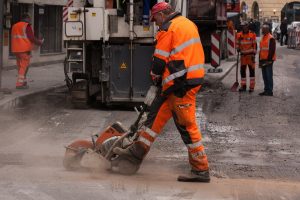 When it comes to matters relating to construction, it looks like the only way to go is up. Nobody visiting the capital of the nation can ignore the massive amount of high-rise construction and building work taking place along River Thames banks and many business districts. It’s not just London experiencing this investment, the nation, in general, is undergoing a rebirth of residential and commercial premises development, changing the visual as well as the fiscal landscape as we know it.
When it comes to matters relating to construction, it looks like the only way to go is up. Nobody visiting the capital of the nation can ignore the massive amount of high-rise construction and building work taking place along River Thames banks and many business districts. It’s not just London experiencing this investment, the nation, in general, is undergoing a rebirth of residential and commercial premises development, changing the visual as well as the fiscal landscape as we know it.
The Value of Construction to the Economy
From figures provided by the government, it is evident the value that construction plays in the British economy; Office for National Statistics data indicates that by the end of 2018, the numbers reached record-breaking levels of £113,127 million. This is mirrored by the increased rise of construction firms working in the country, with yet another unprecedented 325,736 firms working in Great Britain, a rise of 3.5% (11,146) compared with the prior year.
Noise Pollution – a Cause for Concern
No matter how good construction activities might be for the residential and business sectors, it creates another problem that requires to be controlled and addressed: noise pollution. Local authorities have the mandate to check and assess noise emissions coming from building sites, to make sure the wellbeing and health of surrounding communities. Getting exposed to noise pollution is known to have an adverse impact on physical and mental health, not excluding interfering with learning in children, so reducing noise levels is of the utmost importance when it comes to construction sites. It is evident that noise pollution affects the surrounding community, but the guidelines put in place are also advantageous to the workforce. Statistics indicate that in Great Britain, between the years 2017 and 2019, around 21,000 workers suffered hearing loss. This makes such work-related incidences important health and safety concerns.
Government Legislation
When it comes to managing noise on open site operations and construction sites, site operators and developers need to follow various codes of practice and legislation, the main one being BS 5228. This British Standard stipulates stringent compliance guidelines to make sure vibration levels and noise emissions are kept within acceptable ranges; this is to safeguard the surrounding community which includes hospitals, schools, businesses, and residential properties. It’s integral that sites are occasionally evaluated and managed to make sure they follow these regulations. Failure of which can result in the Local Authority using an enforcement notice to shut down the site until proper measures are applied, which means severe cost repercussions for the developer.
Control Measures Recommended in the Legislation
To reduce interference as a result of noise coming from the site, control measures advised in the legislation document include:
-Choosing optimal equipment and machinery for the project
-Occasional machine and plant maintenance
-Making sure equipment is used as per manufacturer guidelines
-Utilising electronically powered compressors instead of diesel or petrol
-Fitting a centralised generator system
-Using electric or hydraulic tools where possible
-Not operating machinery when it’s not needed for immediate use, or leaving it idle where possible
The importance of working with an Acoustic Consultant London
From the information provided above, you can see it is crucial that you stay compliant with British Standard requirements. Failure to adhere to these strict requirements can lead to the site getting shutdown while proper remedial measures are applied, with cost repercussions for hiring equipment and paying an idle workforce. For this reason, it is imperative that you work alongside an Acoustic Consultant from the project inception.
